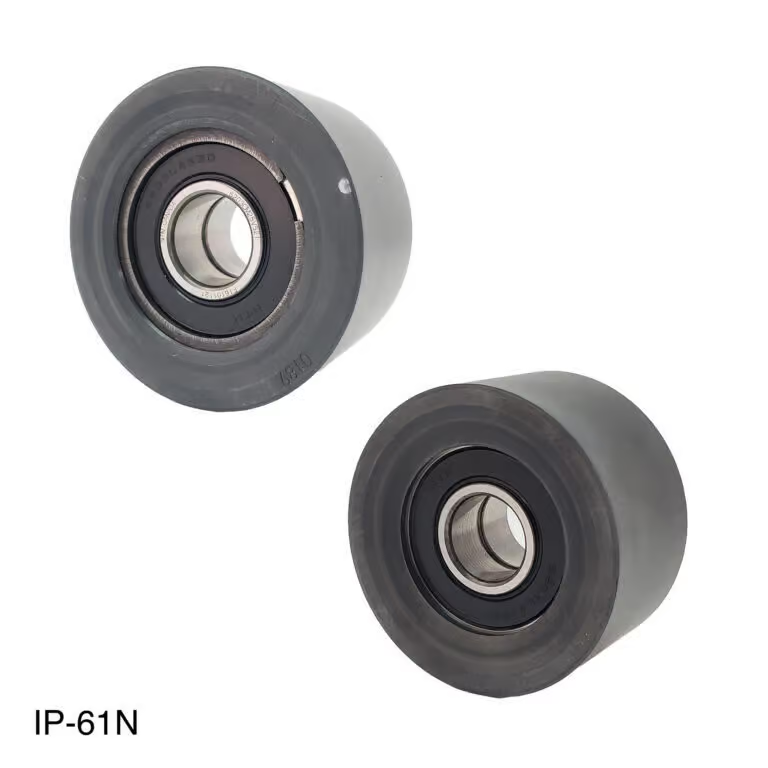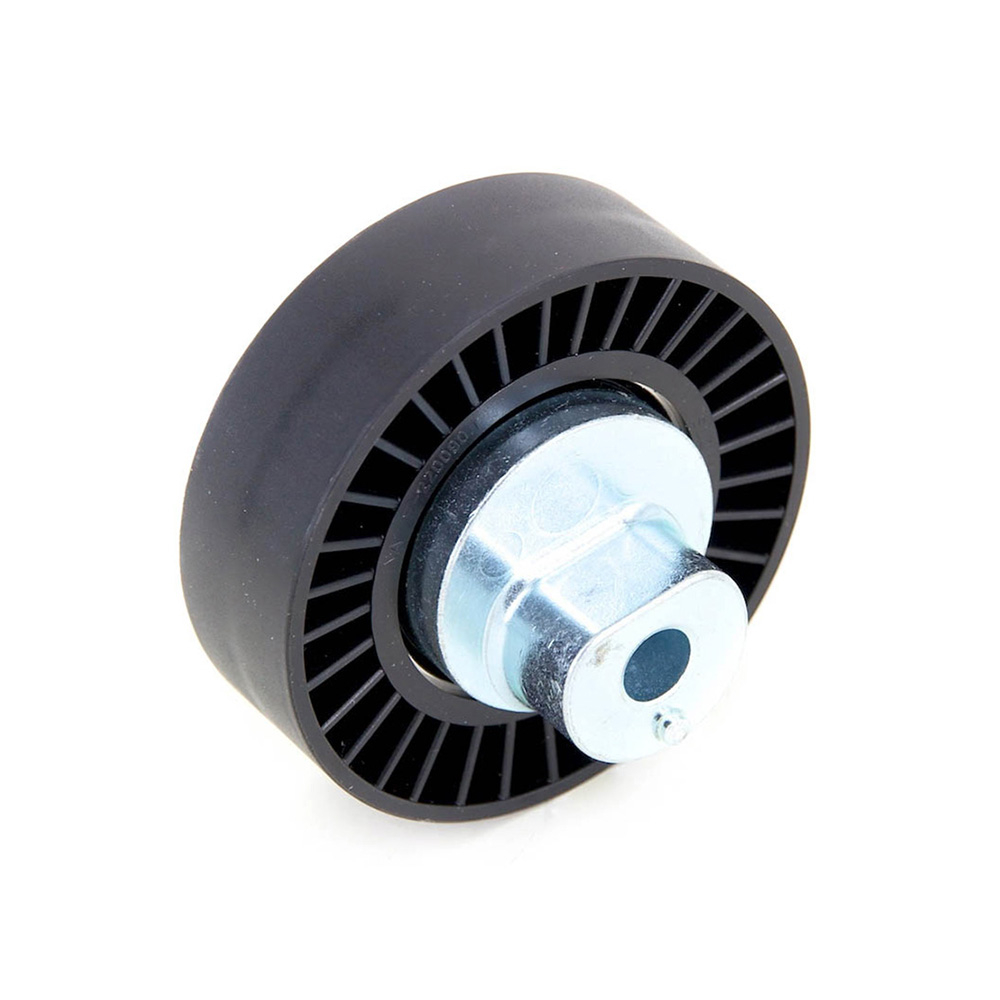Product Description
Agricultural Synchronous Aluminum Timing Spinning Taper Lock Bush Idler Flat Poly Grooved Sheave Wheel Adjustable Crankshaft Alternator Tension V Belt Pulley
Product Description
Pulleys belonging to wheel hub components are generally large in size, and their manufacturing processes are mainly casting and forging. Generally, the design with large size is cast iron (good casting performance), and cast steel is rarely used (poor casting performance); Generally, the smaller size can be designed as forgings and the material is steel. Belt pulley is mainly used for long-distance power transmission, such as the output of small diesel engines, agricultural vehicles, tractors, automobiles, mining machinery, mechanical processing equipment, textile machinery, packaging machinery, lathes, forging machines, power transmission of some small horsepower motorcycles, power transmission of agricultural machinery, air compressors, reducers, reducers, generators, cotton ginners, etc.
V-Belt Pulley:
The specifications of V-belts are divided by the dimensions of back width (top width) and height (thickness). According to different dimensions of back width (top width) and height (thickness), V-belts of different standards have different models. The pitch width, top width and height of V-belts of each model are different, so the pulley must also make various groove types according to the shape of V-belts; These different groove types determine various types of pulley.
| American Standard | |
AK/AKH BK/BKH TA/TB/TC Series Sheaves |
B/C/D Series Sheaves |
Poly-V Sheaves |
Variable Speed Sheaves |
| 3V/5V/8V sheaves | Bushings Split Taper Bushings/QD Bushings/TB Bushings |
European standard (SPA CHINAMFG SPC SPZ) |
|
Belt Pulleys for Taper Bushings |
V belt pulley with CHINAMFG hub |
Adjustable Speed V Belt Pulleys |
Flat Belt Pulleys For Taper Bushes |
Timing pulley:
The synchronous pulley drive is composed of a closed annular belt with equidistant teeth on the inner surface and corresponding pulley. When moving, the belt teeth mesh with the grooves of the belt pulley to transmit motion and power. It is a kind of meshing transmission, which has various characteristics of gear transmission, chain transmission and belt transmission. Widely used in automobile, textile, printing and packaging equipment, sewing equipment, office equipment, laser carving equipment, tobacco, financial machinery, stage lighting, communication and food machinery, medical machinery, steel machinery, petrochemical industry, instruments and meters, various precision machine tools and other fields
Spinning pulley:
Spinning is to fix the flat or hollow blank on the mold of the spinning machine. When the blank rotates with the main shaft of the machine, the blank is pressurized with a roller or driving rod to produce local plastic deformation. Spinning is a special forming method.
Agricultural pulley:
Agricultural pulley refers to the parts that can be used to repair and replace your agricultural machinery pulley, such as lawn mower and rotary tiller. Our agricultural pulley can perfectly replace various brands, including john deere
Custom pulley:
Bore type: pilot bore, finished bore, taper bore, bore for QD bushing.
Surface finish: Black oxide, phosphate, painted, Zinc plate, or passivated.
Material: 5C, cast iron, ductile iron, GG25, GGG40, nylon, aluminum, etc.
Inspection: Dynamic balance & Static balance tests are available with standardized design and well-equipped CNC Machining Systems.
Made according to drawings or samples, OEM inquiries are welcomed.
Related products
Company Profile
Production process
Certificates
/* January 22, 2571 19:08:37 */!function(){function s(e,r){var a,o={};try{e&&e.split(“,”).forEach(function(e,t){e&&(a=e.match(/(.*?):(.*)$/))&&1
| Certification: | CE, ISO |
|---|---|
| Pulley Sizes: | Type F |
| Manufacturing Process: | Forging |
| Material: | Carbon Steel |
| Surface Treatment: | Baking Paint |
| Application: | Chemical Industry, Grain Transport, Mining Transport, Power Plant |
| Samples: |
US$ 80/Piece
1 Piece(Min.Order) | |
|---|
| Customization: |
Available
| Customized Request |
|---|

What are some real-world examples of idler pulley applications in various industries?
Idler pulleys have diverse applications across various industries where belt-driven power transmission is utilized. Let’s explore some real-world examples of idler pulley applications in different industries:
1. Automotive Industry:
– Engine Systems: Idler pulleys are commonly used in automotive engines to guide and tension accessory belts that drive components like alternators, water pumps, power steering pumps, and air conditioning compressors.
– Timing Belt Systems: In timing belt systems, idler pulleys help maintain proper tension and alignment of the timing belt, ensuring precise synchronization of engine components.
2. Manufacturing Industry:
– Conveyor Systems: Industries like manufacturing, mining, and logistics employ conveyor systems with idler pulleys to guide and support conveyor belts, facilitating the movement of materials within production lines and warehouses.
– Industrial Machinery: Various industrial machinery, such as woodworking machines, textile machinery, and printing presses, utilize idler pulleys in their belt drive systems for power transmission and tension control.
3. Agricultural Industry:
– Farm Equipment: Agricultural machinery like combines, tractors, and harvesters incorporate idler pulleys to guide and tension belts that drive components such as power take-off (PTO) systems, augers, and conveyors.
4. HVAC Industry:
– Heating and Cooling Systems: HVAC systems commonly use idler pulleys to maintain tension and proper alignment of belts driving components like fans, blowers, compressors, and pumps.
5. Printing and Paper Industry:
– Printing Machines: Printing and copying machines use idler pulleys to guide and tension belts that drive paper feed mechanisms, rollers, and other components involved in the printing process.
– Paper Processing: Idler pulleys are utilized in paper processing machinery to guide and tension belts that transport paper rolls, ensuring smooth operation during cutting, folding, and packaging processes.
6. Exercise Equipment Industry:
– Fitness Machines: Many types of exercise equipment, such as treadmills, stationary bikes, and rowing machines, incorporate idler pulleys in their belt drive systems to guide and tension the belts that provide resistance or transmit power.
These are just a few examples, and idler pulleys can be found in numerous other industries and applications where belt-driven power transmission is integral to the operation of machinery and systems.

How do idler pulleys impact the performance of automotive and industrial systems?
Idler pulleys play a crucial role in the performance of automotive and industrial systems. Here’s a detailed explanation of how idler pulleys impact the performance of these systems:
1. Belt Tension and Stability:
Idler pulleys help maintain proper belt tension in automotive and industrial systems. They guide and support the belts, ensuring they remain engaged with the pulleys and operate with the desired tension. Proper belt tension is crucial for efficient power transmission, preventing slippage, and maintaining stability in the system. Idler pulleys contribute to the overall reliability and performance of the system by ensuring consistent and reliable belt tension.
2. Belt Routing and Alignment:
Idler pulleys assist in routing and aligning belts in automotive and industrial systems. They are strategically positioned to guide the belts along the desired path, ensuring they are properly aligned with other pulleys and components. Correct belt routing and alignment minimize wear, reduce noise, and optimize power transfer efficiency. Idler pulleys help maintain the desired belt alignment, which is crucial for the smooth operation and longevity of the system.
3. Load Distribution:
Idler pulleys contribute to the even distribution of loads in automotive and industrial systems. By guiding the belts and supporting their movement, idler pulleys help distribute the load evenly across the system. This helps prevent excessive stress on specific components and promotes balanced wear and tear. Proper load distribution enhances the overall performance, reliability, and lifespan of the system.
4. Noise and Vibration Reduction:
Idler pulleys play a role in reducing noise and vibration in automotive and industrial systems. They help dampen vibrations caused by belt operation, minimizing noise and improving the comfort and user experience. By reducing noise and vibration levels, idler pulleys contribute to a quieter and smoother operation of the system.
5. System Efficiency and Energy Conservation:
Efficient idler pulley operation positively impacts the overall efficiency of automotive and industrial systems. Well-designed idler pulleys with low friction and proper bearing selection minimize power losses and maximize energy conservation. Idler pulleys that operate smoothly and efficiently contribute to improved system performance and reduced energy consumption.
6. Component Protection:
Idler pulleys help protect other system components, such as belts, by ensuring proper tension, alignment, and load distribution. By maintaining optimal belt operation, idler pulleys prevent excessive wear, slippage, and premature failure of belts and other related components. This protection enhances the reliability and longevity of the entire system.
7. System Reliability and Durability:
The proper functioning of idler pulleys is crucial for the overall reliability and durability of automotive and industrial systems. Idler pulleys that are correctly sized, well-maintained, and appropriately lubricated contribute to the smooth and continuous operation of the system. They help minimize downtime, reduce the risk of component failure, and ensure the system can perform its intended functions reliably over an extended period.
Overall, idler pulleys have a significant impact on the performance, efficiency, reliability, and durability of automotive and industrial systems. Their role in maintaining belt tension, routing and alignment, load distribution, noise reduction, system efficiency, component protection, and overall system reliability makes them essential components in these applications.

What is an idler pulley, and what is its role in mechanical systems?
An idler pulley is a specific type of pulley that is used in mechanical systems. Here’s a detailed explanation of what an idler pulley is and its role in mechanical systems:
Definition:
An idler pulley is a pulley that is not directly connected to a power source or used for power transmission. Instead, it is used to guide and redirect a belt or rope in a system. The idler pulley is typically positioned in such a way that it changes the direction of the belt or rope, adjusts tension, or provides support to ensure smooth operation.
Role in Mechanical Systems:
The primary role of an idler pulley in mechanical systems is to maintain proper tension and alignment of belts or ropes. It helps to redirect the path of the belt or rope, ensuring that it remains in the correct position and stays engaged with other pulleys or components.
Here are some specific roles and functions of idler pulleys:
1. Belt Tension:
An idler pulley can be used to adjust and maintain the tension in a belt or rope. By adding or removing an idler pulley or adjusting its position, the tension in the belt can be properly controlled. This is crucial for preventing slippage, ensuring efficient power transmission, and extending the lifespan of the belt.
2. Directional Change:
In some systems, an idler pulley is strategically placed to change the direction of the belt or rope. By guiding the belt along a different path, the idler pulley allows the belt to reach components that would otherwise be inaccessible or difficult to connect directly. This enables flexibility in designing mechanical systems and facilitates the proper functioning of various components.
3. Belt Alignment:
An idler pulley helps maintain proper alignment of belts or ropes. It ensures that the belt remains centered on the pulleys and does not deviate from its intended path. Proper alignment is vital for efficient power transmission, as misaligned belts can cause increased friction, wear, and loss of energy.
4. Load Distribution:
In systems with multiple belts or ropes, an idler pulley can be used to distribute the load evenly. By introducing an idler pulley between two driving pulleys, the load can be divided, reducing stress on individual components and improving overall system performance.
5. Noise and Vibration Reduction:
An idler pulley can help reduce noise and vibration in mechanical systems. By providing additional support and tension to belts or ropes, it minimizes excessive movement and vibration, resulting in quieter operation and increased stability.
Idler pulleys are commonly found in various applications, including automotive engines, HVAC systems, conveyor systems, and industrial machinery. Their role in maintaining tension, guiding belts, adjusting alignment, distributing load, and reducing noise makes them essential components in ensuring the smooth and efficient operation of mechanical systems.


editor by CX
2024-05-16







